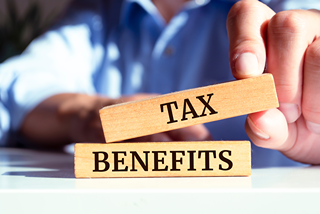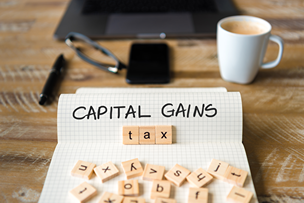Commercial Property Tax Benefits

Commercial property investment is becoming increasingly popular with savvy investors looking to create, build, and strengthen their portfolio. However, understanding Australia’s tax system and the tax benefits you may be able to get from an investment property is crucial and, in many cases, will determine whether or not commercial property investment is the right choice for you.
Today, we’re going to explore commercial investment property tax benefits in more detail. We’ll cover everything you need to know in a simplistic way, helping to make things as clear as possible and pinpoint exactly what tax benefits you can expect when investing in commercial property.
What Tax Benefits Come With a Commercial Property Investment?

Tax Depreciation Schedules
Negative Gearing
Goods and Services Tax (GST)
Land Tax
Capital Gains Tax (CGT) Concessions

Costs of Borrowing (Loan Interest)
There are also quite a few tax benefits associated with the cost of borrowing, most of which are focused on interest expenses. One of these is interest deductions, which essentially allow any interest paid on loans used for purchasing, renovating, or improving a commercial property tax deductible.
Similarly, the expenses incurred in arranging a loan, including loan establishment fees, legal costs, and ongoing management fees, may be tax deductible over the loan’s period or, in some cases, immediately deductible.
An additional tax benefit is prepaid interest deductions. This means that any interest prepaid on loans up to 12 months in advance qualifies for an immediate deduction in the year of payment, potentially optimising deductions in a given financial year in the process.
Lease Incentives
You may also be able to claim certain tax benefits if you offer lease incentives to your tenants. The first of these is a Capital Works Deduction, which an investor may be eligible for if the lease incentive provided by the landlord involves structural changes or improvements to the property. This is usually claimed over a long period of time, typically at a rate of 2.5% per year over 40 years.
Lease incentives themselves can also be tax deductible, as providing them for your tenants is often considered a cost. Better yet, they continue to be deductible over the term of the lease, which means that you may be able to claim a tax deduction gradually rather than all at once.
Capital Allowances
Division 40: Plant and Equipment
There are three main points to focus on within Division 40: Depreciating Assets, Claimable Depreciation, and the Quantity Surveyor’s Report.
Depreciating assets relate to items within the property that have a limited effective life and can decline in value over time, including items such as air conditioners, carpets, and lifts.
This relates directly to ‘Claimable Depreciation’ and allows an investor to claim depreciation deductions for these assets based on their effective life and depreciation rates. This has the potential to lead to huge tax savings, as a portion of the cost of these assets is deducted annually.
To claim these deductions accurately, you’ll need to obtain a Quantity Surveyor’s Report. This will detail all depreciable items and their respective depreciation values, ensuring the maximum allowable deductions.
Division 43: Capital Works
We’ve touched on Capital Works throughout this guide, but in terms of Capital Allowances, it falls into two categories – Building Depreciation and Annual Deductions.
Building depreciation allows you to claim deductions for the decline in value of the building’s structure over time and includes money spent on construction costs and related expenses pertaining to structural improvements.
These ‘Annual Deductions’ are typically claimed at 2.5% per year for a commercial property constructed after 1987, although an older property may have a different rate.
Remember, we’re here to help you at every stage of the journey when it comes to commercial property tax benefits. Contact us for a 15-minute no-obligation call, and we’ll answer all of your questions and look at your next potential steps.
